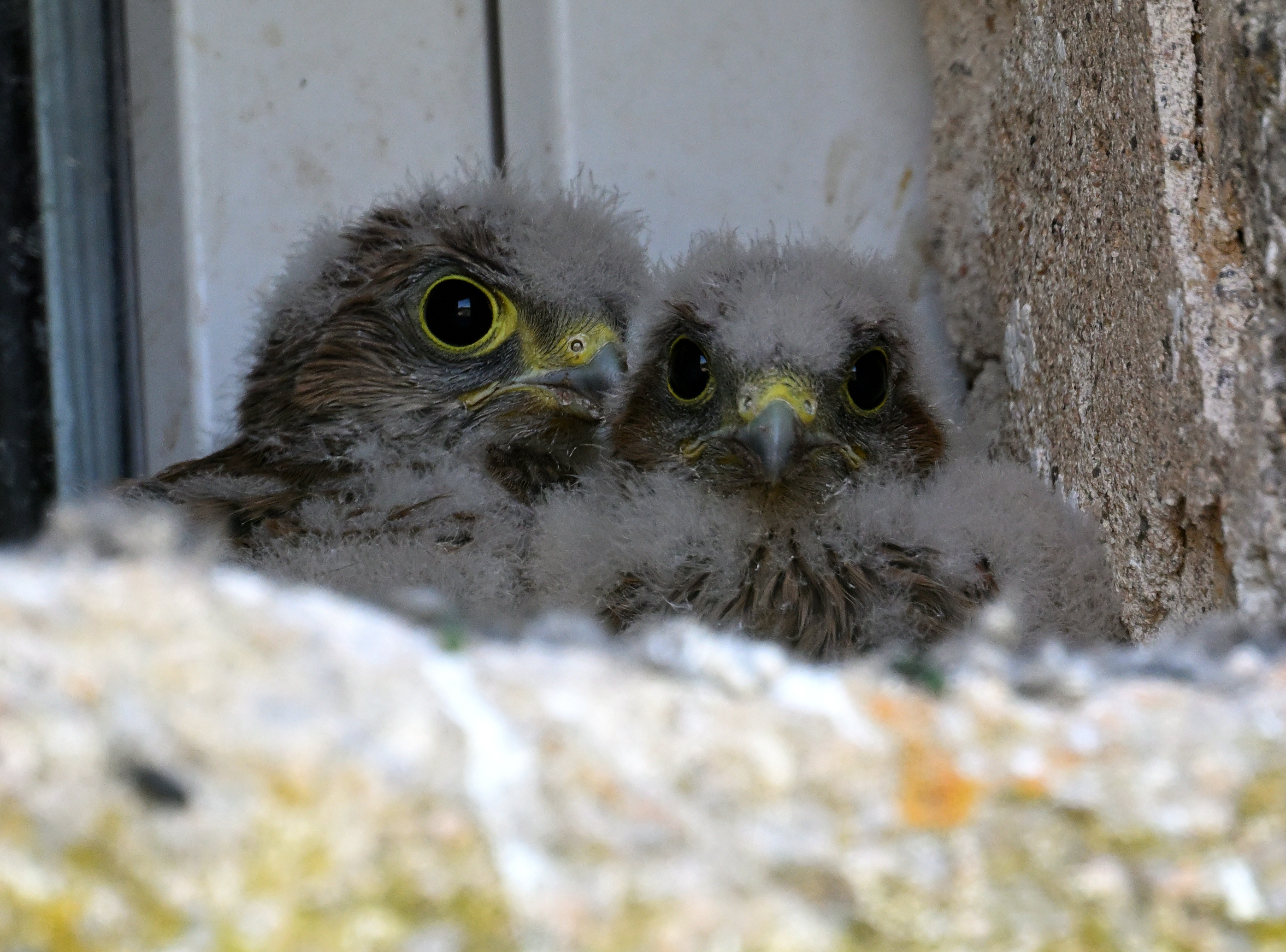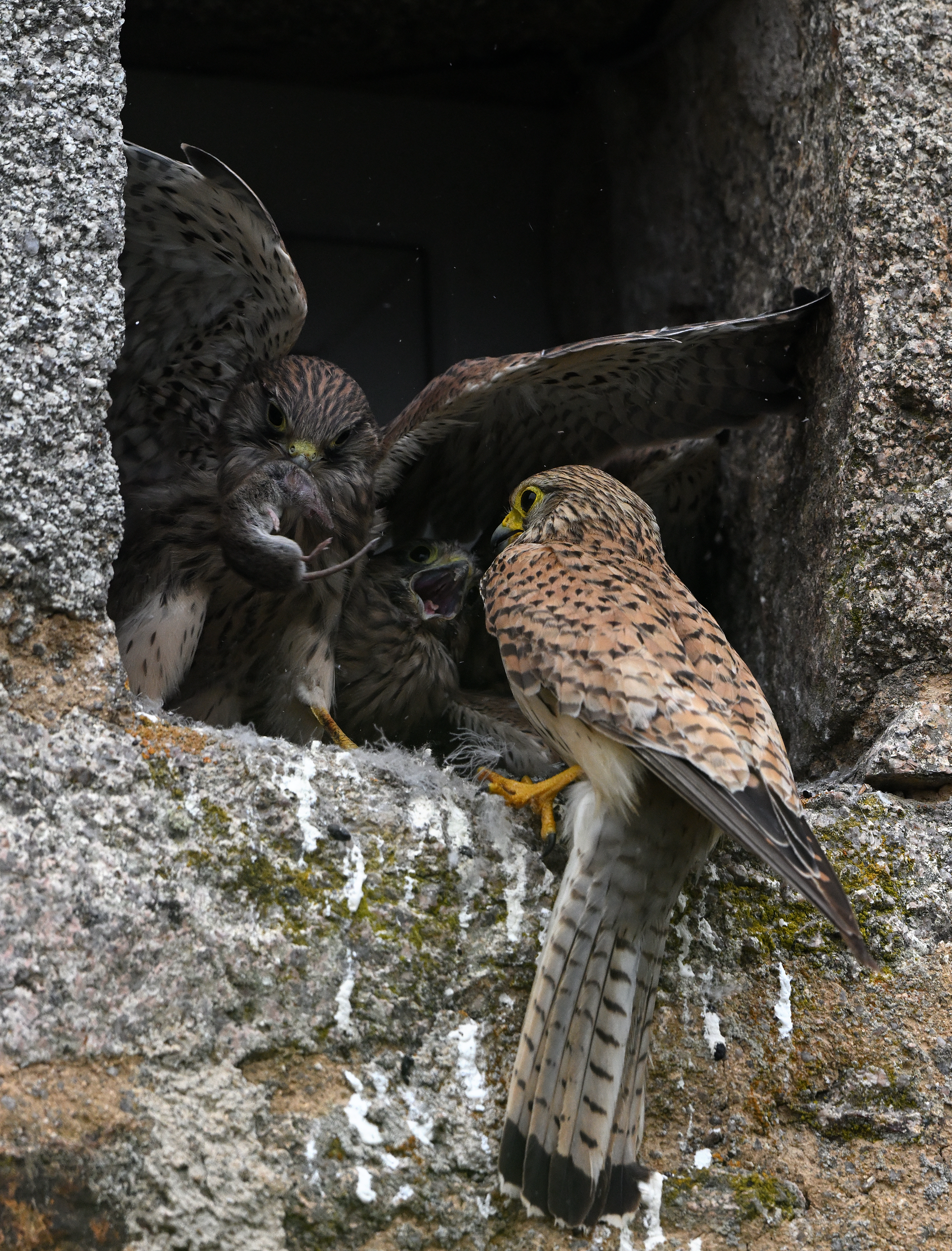A Kestrel family.......bringing new life (and death) to my local area!
 |
| Kestrels are apex predators! |
A hovering hunter that strikes from above. The kestrel is a common sight along woodland edges, using its razor-sharp vision to catch unsuspecting prey.
The kestrel is a vole specialist, with the field vole accounting for the majority of its diet. It will also take mice and shrews, as well as small birds and occasionally worms and insects. Birds are taken more often in places where voles are scarce, such as in urban areas.
Several hunting techniques are used by kestrels, but the most well-known is the hover. A kestrel will fly into the wind and use its tail and wings to hold its position in the air. Keeping its eyes fixed on the ground, it will swiftly drop to pounce on any prey sighted.
With extremely sharp eyesight, kestrels can spot a beetle from 50 metres away. They can even see ultraviolet light, which is invisible to the human eye. This means they can detect the urine trails left by rodents on the ground, helping the birds locate their prey.
Kestrels do not build nests. Instead they lay their eggs in natural cavities, such as holes in trees or cliff faces. They also use nests abandoned by other species. In urban areas, kestrels will lay their eggs on rooftops and holes in walls. Normally four to five eggs are laid in April or May. The chicks hatch after around a month, spending a further five weeks in the nest before fledging.
Kestrels can be found across the country in a variety of habitats. They tend to hunt in open spaces with long grass as this is prime field-vole habitat. The birds rarely venture far into woodland, but will nest and hunt along wood edges.
Although 90% of their diet is made up of Voles, Mice and Shrews, they will also take Caterpillars, Crickets and Beetles. It is a fact of life, that nature can appear cruel, but every living thing has to eat and whilst some images may appear 'violent', it is 'the circle of life', that applies to us all.
Their distinctive hovering technique makes kestrels easy to spot. They are often seen hovering above overgrown roadside verges. Also look out for kestrels perched on fences and on posts in fields.
The Kestrel population has fallen dramatically over the past few decades due to a number of factors including agricultural intensification, which may have reduced field vole numbers. They are also suffering secondary poisoning by eating voles and mice that have eaten poison meant for rats. In addition, loss of nesting sites, such as old trees with cavities, is also a possible factor.
It's great to be able to report, that all five of the chicks from this nest, have fledged successfully and brought more new life to my local area!
Having fledged, the parents will continue to feed them for another few weeks and during this time, they will sometimes return to the nest site to feed and to roost.
After this time, they will each make their own territory and hopefully go on to raise their own chicks next season!
If you enjoy my blogs, please share them on facebook etc.
Older blogs can be viewed by clicking on the ☰ symbol, at the top of the home page.
Cheers
Glynn
























Wow Glynn, I have been following this story with you on Dordogne Wildlife, but this is amazing to see all the photos together in sequence. Love reading the kestrel story and info as well. Remarkable photos, well done and thank you for sharing this wonderful experience. Diane xx
ReplyDeleteThanks Diane.....glad you enjoyed it.
DeleteA remarkable account of this kestrel family. The pictures are beyond superb.
ReplyDeleteThanks David, I appreciate your comments.
Delete